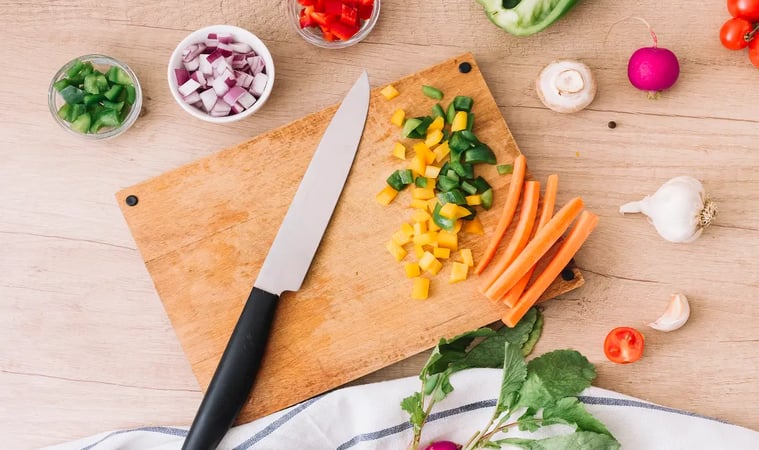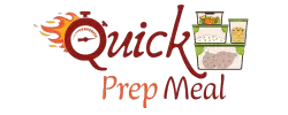
Key Food Preparation Techniques: A Clear and Comprehensive Outline
Start with a broad overview of various food preparation methods. This sets the stage by giving you a clear understanding of the different techniques available.
FOOD PREPARATION
Mae Ellison
2/27/20254 min read


Outline of Food Preparation Techniques
Food preparation is the cornerstone of great cooking. Whether you're a beginner or an experienced chef, understanding the essential techniques of food prep is crucial for crafting flavorful and visually appealing dishes. In this guide, we’ll walk you through the basics of food preparation, from mastering knife skills to exploring popular cooking methods, all while highlighting the key tools and tips you need to succeed in the kitchen.
Introduction to Food Preparation Techniques
Food preparation involves more than just cutting vegetables or following recipes; it’s the first step in creating a delicious meal. Whether you're cooking a weeknight dinner or preparing a special feast, the methods you use to prepare your ingredients will determine the outcome of your dish.
In this article, we’ll explore various food preparation techniques that every cook should know. From essential knife skills to understanding heat transfer in cooking, we’ll cover the most important aspects that will help you in your kitchen journey. Additionally, we’ll discuss how to organize your kitchen tools and ingredients effectively, so you're always ready to cook with confidence.
Let’s dive into the core techniques that every cook should master!
Essential Food Preparation Skills Every Cook Should Know
Knife Skills for Efficient Food Prep
A sharp knife and proper cutting technique are essential for efficient food prep. Learning how to chop, dice, and julienne ingredients correctly not only saves time but also ensures your ingredients are evenly cooked. Proper knife skills are the foundation for creating precise cuts, which will elevate the presentation of your meals.
Mastering Mise en Place
Mise en place is a French culinary term meaning "everything in its place." It refers to the practice of organizing and prepping all your ingredients before you start cooking. This technique saves time, reduces stress, and allows you to focus entirely on the cooking process once you begin. Whether you're chopping veggies, measuring out spices, or marinating meats, having everything prepared beforehand ensures smoother, more efficient cooking.
Understanding Heat Transfer
Understanding the science behind heat transfer is vital for controlling the cooking process. There are three main methods of heat transfer: conduction (direct contact, like when using a pan), convection (heat transferred by air or liquid, such as in an oven or steamer), and radiation (direct heat, like grilling). Knowing when and how to use each method will allow you to perfect various cooking techniques.
Tips for Quick and Efficient Meal Prep
For those busy days when you don't have much time to cook, learning how to streamline your meal prep is essential. Organize your tasks by preparing certain ingredients in bulk, such as chopping vegetables or cooking grains in advance. Time-saving techniques can help you enjoy a delicious, home-cooked meal without the hassle of a long prep time.
Popular Cooking Methods and Techniques
Roasting, Grilling, and Broiling
Roasting, grilling, and broiling are all dry-heat cooking methods that produce distinct flavors and textures. Roasting typically involves cooking in an oven, while grilling is done over direct heat, and broiling uses heat from above. Each method creates a crispy, caramelized exterior while retaining moisture in the interior, making them ideal for meats, vegetables, and even fruits.
Boiling vs. Steaming: Which Is Better?
Both boiling and steaming are moist-heat cooking methods, but they produce different results. Boiling is typically used for pasta, potatoes, and other starchy foods, while steaming is gentler and preserves the nutrients in vegetables and fish. Understanding when to use each method is key for preserving both texture and flavor.
Sautéing vs. Stir-Frying
Sautéing and stir-frying are both quick cooking techniques, but they have slight differences. Sautéing involves cooking ingredients in a small amount of fat over medium-high heat, usually in a frying pan. Stir-frying, on the other hand, is done in a wok with high heat and constant stirring. Both methods are great for vegetables, proteins, and quick meals, but stir-frying usually requires a bit more technique and equipment.
Sous-Vide: The Modern Food Prep Technique
Sous-vide, a French phrase that translates to 'under vacuum,' is a cooking method where food is cooked gently in a water bath at a precise, controlled temperature. This method results in perfectly cooked meats, vegetables, and even desserts. While it requires specialized equipment like a sous-vide machine, it offers amazing control over texture and tenderness, making it popular for advanced home cooks and professionals alike.
Cooking Tools and Equipment for Successful Food Prep
Must-Have Kitchen Equipment
A well-stocked kitchen is key to efficient food prep. Essential tools include a good chef's knife, cutting boards, measuring spoons, mixing bowls, and a food processor. Each tool has its purpose, helping to streamline your cooking process and ensure consistent results.
Choosing the Right Pan for Different Techniques
Choosing the right pan is crucial for achieving the desired cooking result. A non-stick pan is perfect for delicate ingredients like eggs or fish, while a cast-iron skillet is ideal for searing meats and achieving a crispy crust. Stainless steel pans are great for deglazing and making sauces, while copper pans offer even heat distribution for fine cooking.
The Importance of Cooking Thermometers
A food thermometer is one of the most reliable tools for ensuring your dishes are cooked to perfection. Whether you're roasting a chicken or baking a cake, using a thermometer helps you achieve the exact cooking temperature you need, reducing the risk of undercooking or overcooking.
Specialty Equipment for Advanced Techniques
If you’re interested in experimenting with more advanced cooking methods, investing in specialty tools like sous-vide machines, blow torches, or air fryers can expand your repertoire. These tools may seem intimidating at first, but they can significantly enhance the quality and precision of your meals once you get the hang of them.
Conclusion: Mastering the Art of Food Preparation
Building Confidence in the Kitchen
The key to mastering food prep is practice. Don’t be afraid to experiment with different techniques, cooking methods, and tools. As you gain more confidence in the kitchen, cooking will become a more enjoyable and rewarding experience.
The Benefits of Learning Food Preparation
Mastering food preparation offers numerous benefits: it saves time, enhances your meals, and even reduces food waste. By learning how to properly prepare your ingredients, you’re setting yourself up for culinary success every time you cook.
Resources for Improving Cooking Skills
There are plenty of resources available to help you improve your food prep techniques, from cookbooks and online courses to cooking classes and YouTube tutorials. The more you learn and practice, the better your cooking skills will become, ensuring that every meal is a delicious success.
